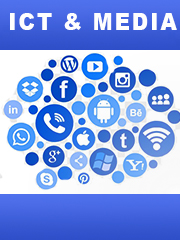Report overview
Cognitive computing is executed through a computer-generated model mimicking the human process of thinking and cognitive ability in the form of simulation over a specialized platform. The process of transforming thoughts into simulation involves systems for self-learning, to extract unstructured data and churn out insightful analytics, to recognize patterns unable to be spotted by the human eye, and to process and identify language formation and structure behind it.
This report aims to provide a comprehensive presentation of the global market for Cognitive Computing Technology, with both quantitative and qualitative analysis, to help readers develop business/growth strategies, assess the market competitive situation, analyze their position in the current marketplace, and make informed business decisions regarding Cognitive Computing Technology. This report contains market size and forecasts of Cognitive Computing Technology in global, including the following market information:
Global Cognitive Computing Technology Market Revenue, 2018-2023, 2024-2030, ($ millions)
Global top five companies in 2022 (%)
The global Cognitive Computing Technology market was valued at US$ 9955.7 million in 2022 and is projected to reach US$ 33540 million by 2029, at a CAGR of 18.9% during the forecast period. The influence of COVID-19 and the Russia-Ukraine War were considered while estimating market sizes.
At present, the market is highly dominated by North America. The reason behind high market share of North America is the technological advancements and growing volume of unstructured data. Additionally, heavy investments in research & development from the leading vendors are also helping in the market to develop.
We surveyed the Cognitive Computing Technology companies, and industry experts on this industry, involving the revenue, demand, product type, recent developments and plans, industry trends, drivers, challenges, obstacles, and potential risks.
Total Market by Segment:
Global Cognitive Computing Technology Market, by Type, 2018-2023, 2024-2030 ($ millions)
Global Cognitive Computing Technology Market Segment Percentages, by Type, 2022 (%)
Natural Language Processing (NLP)
Machine Learning
Automated Reasoning
Others
Global Cognitive Computing Technology Market, by Application, 2018-2023, 2024-2030 ($ millions)
Global Cognitive Computing Technology Market Segment Percentages, by Application, 2022 (%)
BFSI
Transportation
Retail
Energy & Power
IT & Telecom
Aerospace & Defense
Others
Global Cognitive Computing Technology Market, By Region and Country, 2018-2023, 2024-2030 ($ Millions)
Global Cognitive Computing Technology Market Segment Percentages, By Region and Country, 2022 (%)
North America
US
Canada
Mexico
Europe
Germany
France
U.K.
Italy
Russia
Nordic Countries
Benelux
Rest of Europe
Asia
China
Japan
South Korea
Southeast Asia
India
Rest of Asia
South America
Brazil
Argentina
Rest of South America
Middle East & Africa
Turkey
Israel
Saudi Arabia
UAE
Rest of Middle East & Africa
Competitor Analysis
The report also provides analysis of leading market participants including:
Key companies Cognitive Computing Technology revenues in global market, 2018-2023 (estimated), ($ millions)
Key companies Cognitive Computing Technology revenues share in global market, 2022 (%)
Further, the report presents profiles of competitors in the market, key players include:
Google
IBM
Microsoft Corporation
Expert System
SparkCognition
Cisco Systems
HPE
Palantir Technologies
Saffron Technology
ColdLight Solutions
CognitiveScale
Enterra Solutions
Numenta
Vicarious
CustomerMatrix
DataRobot
Outline of Major Chapters:
Chapter 1: Introduces the definition of Cognitive Computing Technology, market overview.
Chapter 2: Global Cognitive Computing Technology market size in revenue.
Chapter 3: Detailed analysis of Cognitive Computing Technology company competitive landscape, revenue and market share, latest development plan, merger, and acquisition information, etc.
Chapter 4: Provides the analysis of various market segments by type, covering the market size and development potential of each market segment, to help readers find the blue ocean market in different market segments.
Chapter 5: Provides the analysis of various market segments by application, covering the market size and development potential of each market segment, to help readers find the blue ocean market in different downstream markets.
Chapter 6: Sales of Cognitive Computing Technology in regional level and country level. It provides a quantitative analysis of the market size and development potential of each region and its main countries and introduces the market development, future development prospects, market space of each country in the world.
Chapter 7: Provides profiles of key players, introducing the basic situation of the main companies in the market in detail, including product sales, revenue, price, gross margin, product introduction, recent development, etc.
Chapter 8: The main points and conclusions of the report.
